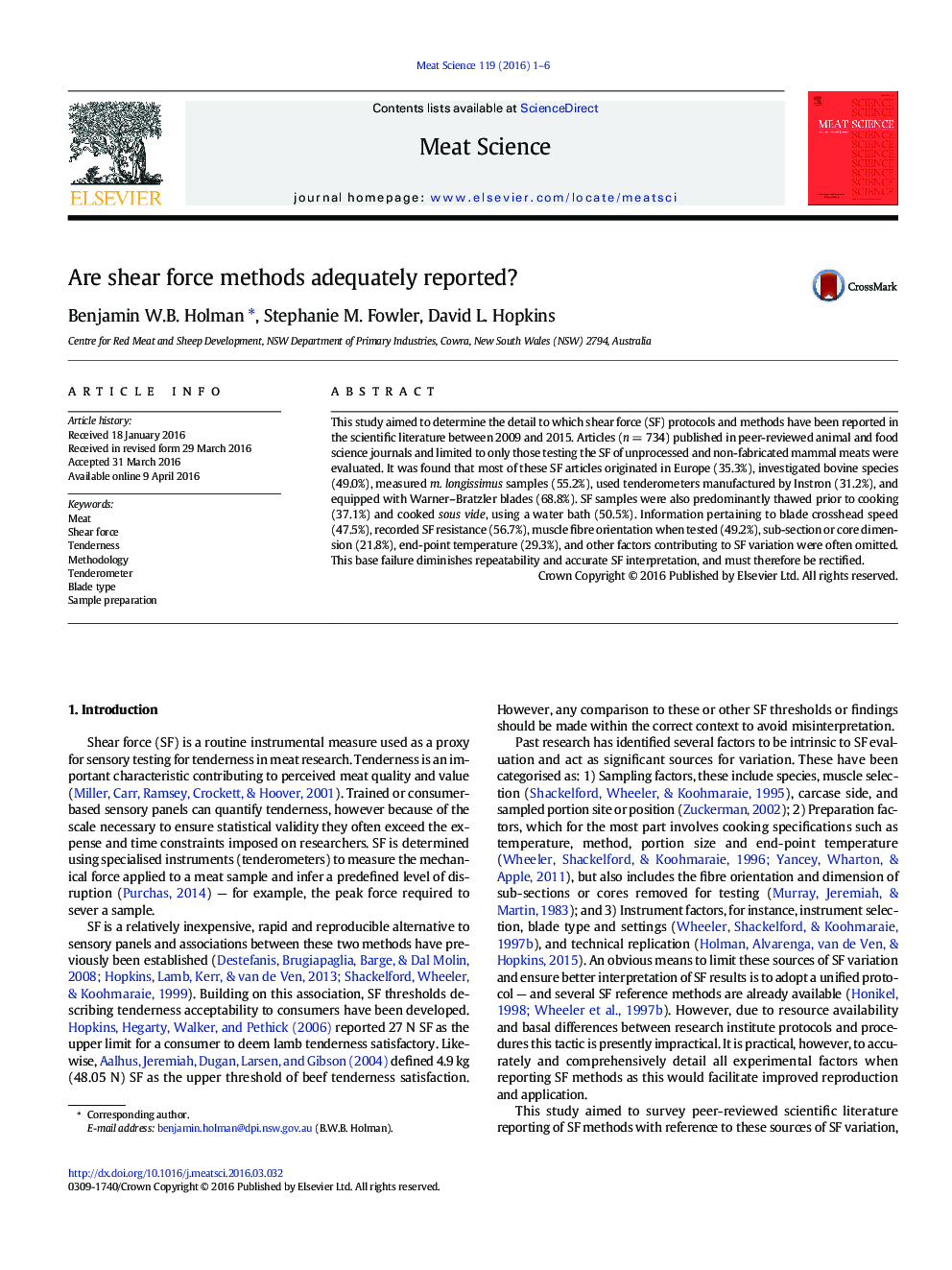| Article ID | Journal | Published Year | Pages | File Type |
|---|---|---|---|---|
| 2449359 | Meat Science | 2016 | 6 Pages |
•Meat studies insufficiently detail shear force methods applied.•Different key factors driving shear force variability were frequently omitted.•Interpretation and replication depend on reporting shear force accurately.
This study aimed to determine the detail to which shear force (SF) protocols and methods have been reported in the scientific literature between 2009 and 2015. Articles (n = 734) published in peer-reviewed animal and food science journals and limited to only those testing the SF of unprocessed and non-fabricated mammal meats were evaluated. It was found that most of these SF articles originated in Europe (35.3%), investigated bovine species (49.0%), measured m. longissimus samples (55.2%), used tenderometers manufactured by Instron (31.2%), and equipped with Warner–Bratzler blades (68.8%). SF samples were also predominantly thawed prior to cooking (37.1%) and cooked sous vide, using a water bath (50.5%). Information pertaining to blade crosshead speed (47.5%), recorded SF resistance (56.7%), muscle fibre orientation when tested (49.2%), sub-section or core dimension (21.8%), end-point temperature (29.3%), and other factors contributing to SF variation were often omitted. This base failure diminishes repeatability and accurate SF interpretation, and must therefore be rectified.
